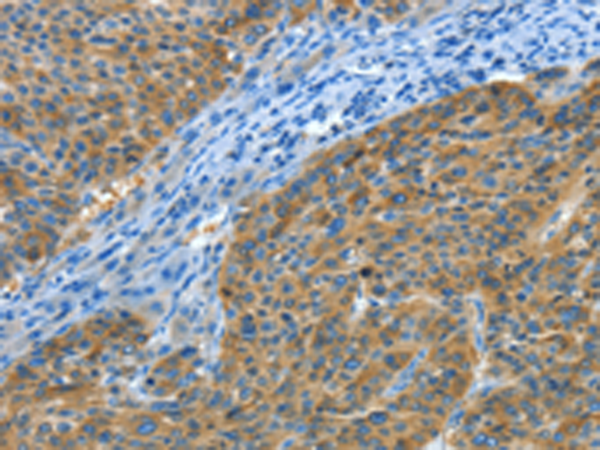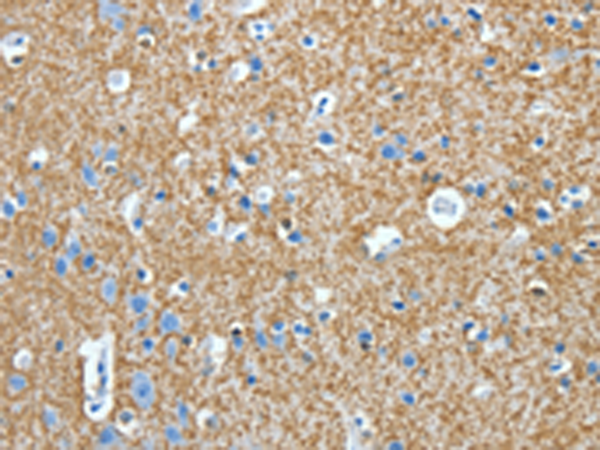

| WB | 咨询技术 | Human,Mouse,Rat |
| IF | 咨询技术 | Human,Mouse,Rat |
| IHC | 1/50-1/200 | Human,Mouse,Rat |
| ICC | 技术咨询 | Human,Mouse,Rat |
| FCM | 咨询技术 | Human,Mouse,Rat |
| Elisa | 1/1000-1/5000 | Human,Mouse,Rat |
| Aliases | AMPH2; AMPHL; SH3P9 |
| Host/Isotype | Rabbit IgG |
| Antibody Type | Primary antibody |
| Storage | Store at 4°C short term. Aliquot and store at -20°C long term. Avoid freeze/thaw cycles. |
| Species Reactivity | Human |
| Immunogen | Fusion protein of human BIN1 |
| Formulation | Purified antibody in PBS with 0.05% sodium azide and 50% glycerol. |
+ +
1. **"BIN1 regulates BACE1 intracellular trafficking and amyloid-β production"**
作者:Marrero-Wood et al.
摘要:研究通过BIN1抗体检测发现BIN1蛋白通过调控BACE1(β-分泌酶)的细胞内运输,影响阿尔茨海默病中β-淀粉样蛋白(Aβ)的生成。
2. **"BIN1 loss promotes prostate cancer metastasis through activation of TWIST1"**
作者:Du et al.
摘要:利用BIN1抗体进行免疫印迹及免疫组化分析,揭示BIN1在抑制前列腺癌转移中的作用,其缺失通过激活TWIST1信号通路促进肿瘤侵袭。
3. **"BIN1 modulates the dynamic interaction between tau and microtubules in Alzheimer's disease"**
作者:Frost et al.
摘要:通过免疫共沉淀结合BIN1抗体,发现BIN1与tau蛋白相互作用,影响其与微管的结合能力,加剧神经纤维缠结形成。
4. **"Antibody-based profiling of BIN1 isoforms in cardiovascular tissues"**
作者:Luo & Nakamura
摘要:开发特异性BIN1抗体,验证不同剪切变体在心脏组织中的表达差异,为BIN1在心肌细胞膜重塑中的功能研究提供工具支持。
以上文献示例基于BIN1抗体的典型应用场景(疾病机制、蛋白互作及工具开发),实际文献需结合具体数据库检索确认。
BIN1 (Bridging Integrator 1), also known as Amphiphysin II, is a ubiquitously expressed protein belonging to the BAR (Bin-Amphiphysin-Rvs) domain protein family. It plays critical roles in membrane dynamics, cytoskeleton regulation, and intracellular trafficking by interacting with components like clathrin, dynamin, and microtubules. BIN1 is involved in cellular processes such as endocytosis, T-tubule biogenesis in muscle cells, and synaptic vesicle recycling in neurons. Dysregulation of BIN1 has been implicated in multiple diseases, including Alzheimer’s disease (AD), cancer, and muscular pathologies. In AD, BIN1 is the second-most significant genetic risk factor after APOE, linked to tau pathology and amyloid-β metabolism. In cancer, BIN1 exhibits tumor-suppressor or oncogenic roles depending on context, influencing apoptosis and cell cycle control. Cardiomyopathy and centronuclear myopathy are associated with BIN1 mutations affecting membrane scaffolding.
BIN1 antibodies are essential tools for studying its expression, localization, and function. They are widely used in techniques like Western blotting, immunohistochemistry (IHC), and immunofluorescence (IF) to detect BIN1 isoforms generated by alternative splicing. These antibodies help elucidate tissue-specific roles, such as neuronal isoforms in AD or muscle-specific variants in myopathies. Commercial BIN1 antibodies are typically raised against epitopes in the N-terminal or BAR domains, with validation across species. However, variability in isoform detection requires careful antibody selection. Research applications include exploring BIN1’s interaction networks, disease mechanisms, and therapeutic targeting, making these antibodies vital for advancing molecular and clinical studies.
×